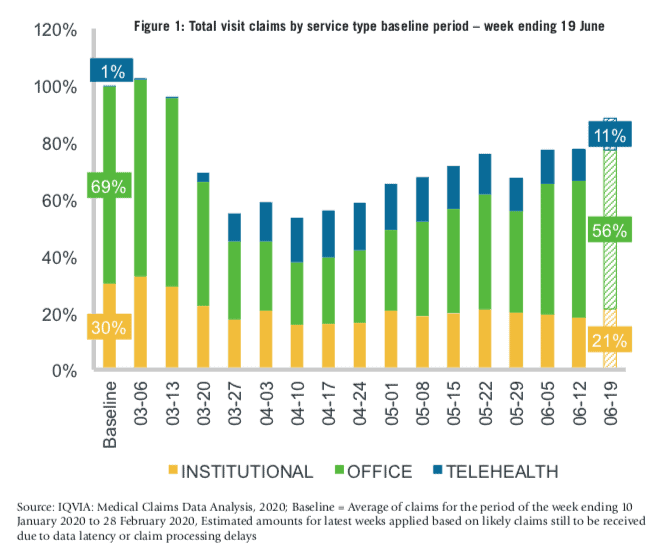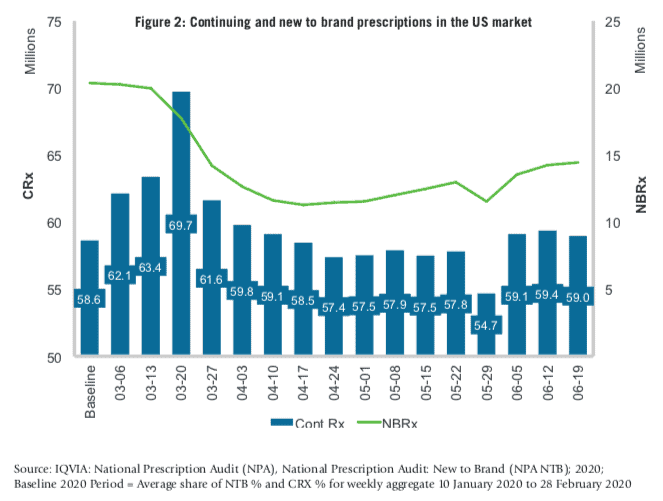
The COVID-19 pandemic is having a considerable impact across commercial activities in the life sciences industry, something we are seeing first-hand in our Contract Sales and Medical Solutions (CSMS) teams across the globe.
This impact has significantly affected both promotional and non-promotional activities, with many industry-sponsored patient services having to rapidly adapt to lockdown arrangements and limits on access to healthcare premises.
It is those services that provide support directly to patients where were are likely to see some of the biggest future opportunities for industry, driven by changing health system and patient behaviours and the residual impact of managing the pandemic.
The COVID-19 effect on service delivery
Pharma-sponsored patient services have evolved from relatively simple education or adherence support to a full range of solutions, including more complex in-person, multichannel and interventional interactions that complement the care patients receive from their healthcare professionals (HCPs). These different services have understandably been affected in different ways by lockdown and other COVID-19 restrictions.
Many services are already delivered remotely via digital and telephone support and have continued largely unaffected. For those involving in-person support from nurses or other HCPs, a shift to remote interactions has taken place in line with restrictions on travel.
Some interactions, however, simply can’t be done virtually, such as providing home injections or infusions. In these cases, to continue to provide essential patient care, face-to-face activity has continued. In countries such as the UK and Australia, these essential services have kept nearly 50% of our nurses active in the field. In the US, nurses have also continued to provide essential educational activities for the med tech sector.
The COVID-19 effect on patient and HCP behaviour
One of the more visible, and immediate, impacts of the pandemic has been in the HCP-to-patient interaction and accompanying behaviours. The demands for appropriate space and social distancing has created a new environment both physically and psychologically; care centres have new guidelines to follow, and patients continue to be concerned about the risks of going to healthcare premises.
And so voluntary interactions have declined significantly, such as in the UK, where Accident and Emergency patient volume dropped by over 40% during April and May. Naturally, the use of telehealth (telephone and video calls) for at-home instead of office visits has soared compared to baselines across the globe. In the US for example, medical claims for telehealth visits grew from a pre-COVID baseline of 1% of total claims to a high of almost 20% during April (see figure 1). A similar acceleration in telehealth usage in the UK has been likened to “witnessing ten years of change in one week” according to a British GP.

A shift to more home treatment is also evident from data on medicines with IV and self-administration injection options. Across four example medicines in the US, the proportion of patients self-administering has risen by 5-15% between February and June. However, while many patients have embraced remote, telephone and email interactions during the pandemic, this trend is expected to create new adherence challenges.
Some therapy areas such as asthma have seen notable increases in adherence, likely linked to fears about contracting the virus. In the US and EU there were significant increases in repeat prescription volumes early in the pandemic, as patients stocked up to guard against shortages. However, reduced routine appointments, the risk of infection, financial impacts, stress associated with uncertainty and social isolation will all likely contribute to a negative impact on adherence in different patient populations.
Repeat prescription volumes have fluctuated noticeably in the US since February (see figure 2) and this will likely continue as the country grapples with a resurgence of infections. New prescription volumes are still noticeably down and are an indicator of not just reduced healthcare activity but also a likely backlog of patients yet to be seen.

The longer-term effects
The reality is that we are still at an early stage in the progression of this global pandemic. However, there are three important long-term impacts that the pharma industry should consider now when looking at approaches to patient services during and after the pandemic:
1. The shift to more digital and remote interactions will have a residual effect on the volume of HCP-patient interactions. The process of digitisation in healthcare was already underway and will undoubtedly accelerate, with a higher baseline set for digitally enabled remote interactions and more on-line and mobile patient education and engagement. It will therefore be increasingly important for companies to develop effective digital patient strategies.
2. HCPs will be more willing to consider home treatment options as viable alternatives to patients coming into hospital. IQVIA research in Australia
has already indicated up to 60% of hospital specialists now want to refer more patients for home treatment, a shift pharma can facilitate. We have already spoken with companies working in rheumatology, oncology and dermatology that are investigating options for enabling these shifts, and industry can be more proactive in finding viable solutions for more out-of-hospital care.
3. Health systems will be under pressure for some time to catch up with a significant backlog of work delayed by the pandemic while facing financial challenges from its cost. Industry has an opportunity to contribute positively to the catch-up effort by facilitating faster diagnoses, redesigning patient journeys and enabling out-of- hospital care to reduce these delays.
The future role of patient services
Pharma-sponsored patient services have a long history with a wealth of evidence that multichannel programmes using technology and personal interactions together can significantly improve health outcomes. It is therefore legitimate for pharma to position sponsored patient services as a credible part of the post-COVID-19 environment.
With social distancing and movement limitations likely with us for some time, the combination of digital and human interactions is an ideal solution for healthcare during the pandemic and creates an opportunity for industry. However, it is important to note that the most impactful patient services are those that understand the motivators and drivers of patient behaviour and deploy interventions matched to individuals’ needs.
To be truly valuable these services should use technologies to create personalised, digital interventions that complement person-to- person interactions. Indeed, now would be a good time for companies to review their patient services and consider how they can be reimagined and redesigned to take account of the COVID-19 challenge.
Facilitating the shift to more home-based medical care is also something pharma has experience in and where it can add more value to health systems that are trying to release capacity. Doing this successfully will require giving each patient an experience that provides reassurance, builds confidence and creates the right circumstances for effective self-management.
Importantly, the role industry is playing in leading efforts to find and manufacture effective COVID-19 treatments and a vaccine will likely have a positive impact on public and healthcare system perceptions of pharma. This may help engender greater acceptance of patient support services and give industry the opportunity to contribute in a greater way than ever before. Pharma is part of the solution to COVID-19 now and for the future and can help build a new era for patient services.
If you would like to know more about our work on COVID-19, please visit IQVIA’s COVID-19 Resource Center at www.Iqvia.com.
Note: Data cited in this article is drawn from IQVIA’s proprietary data assets accessed in June 2020, including IQVIA Medical Claims Data, IQVIA Weekly Sales Perspectives, IQVIA National Prescribing Audit, IQVIA COVID-19 Market Impact Cross-Country Report and “Navigating COVID-19’s impact: An initial assessment of the pandemic’s effect on Australian healthcare” IQVIA white paper; British GP mentioned in www.nytimes.com ‘Telemedicine arrives in the UK: ’10 years of change in one week’ April 2020
John Procter is VP Offering Development Contract Sales & Medical Solutions Global Business Unit at IQVIA




